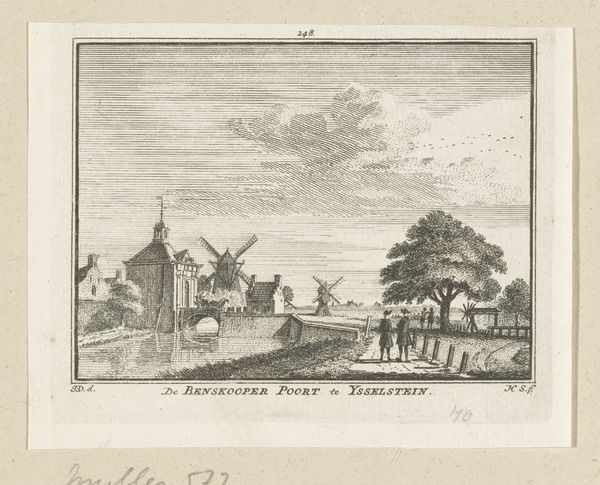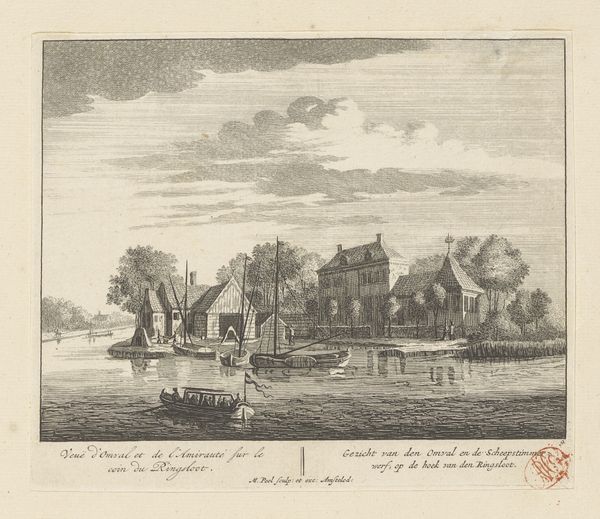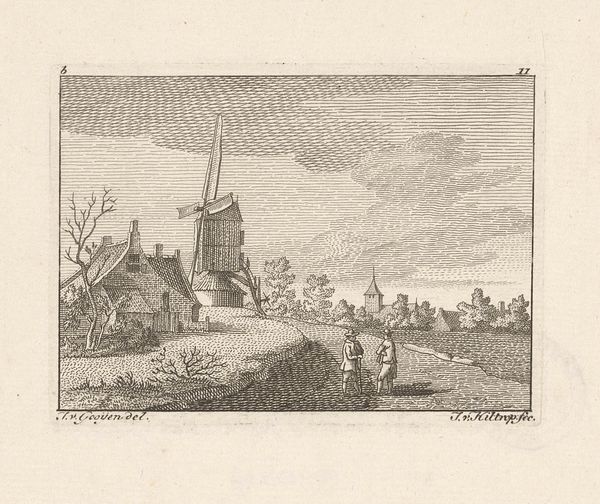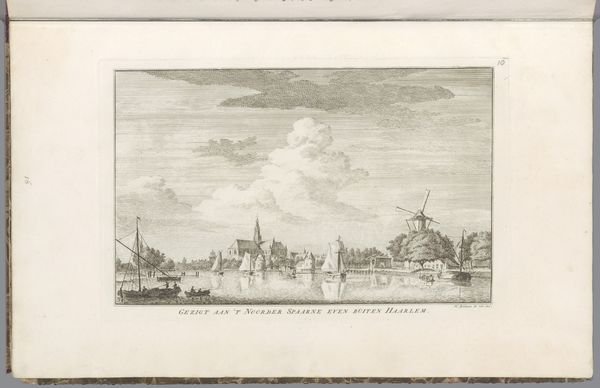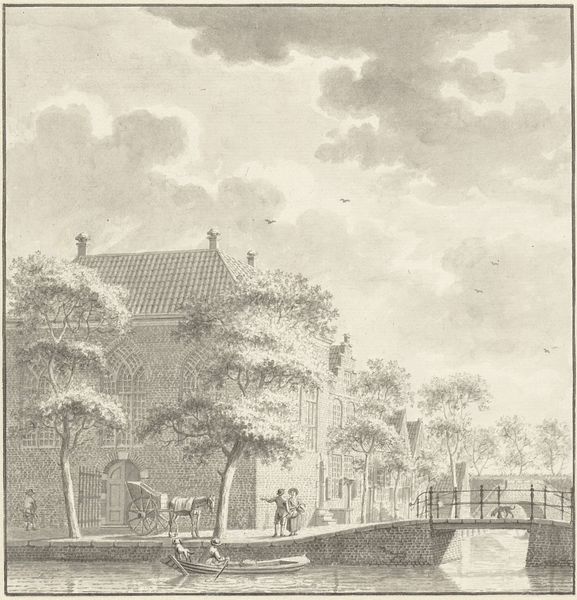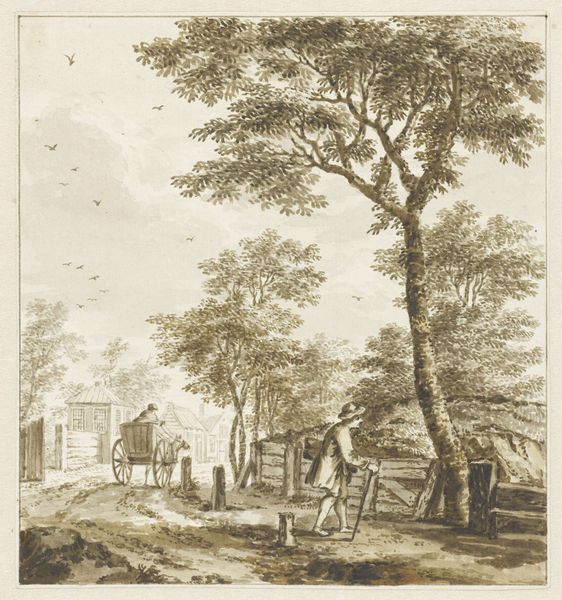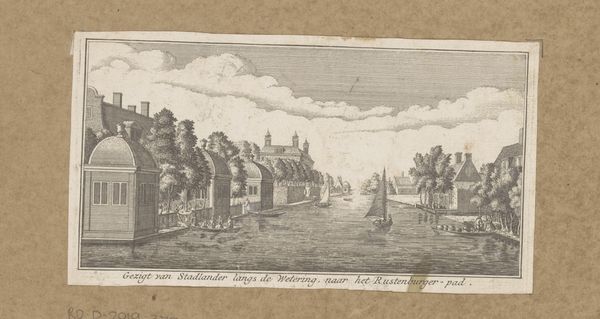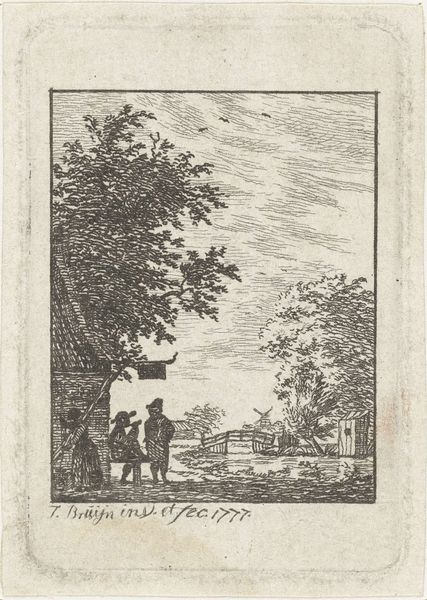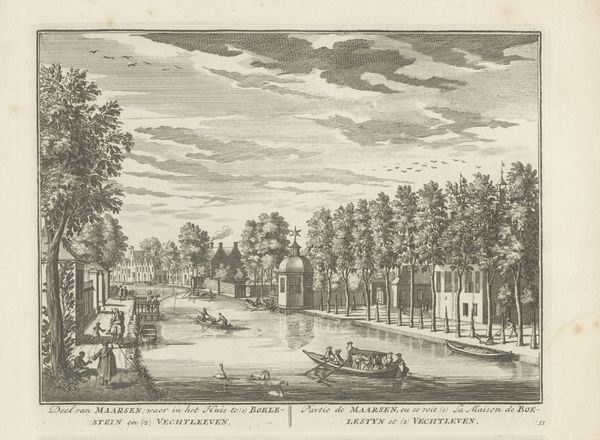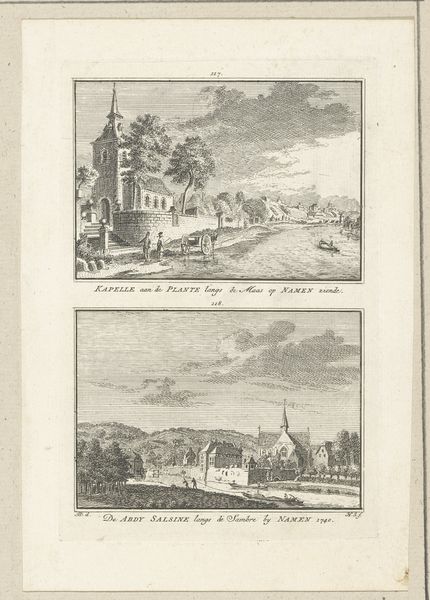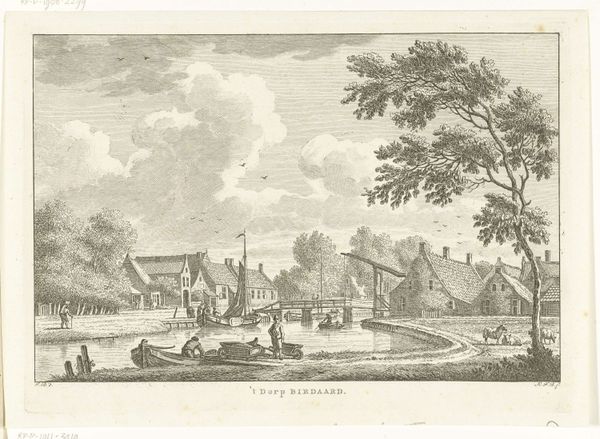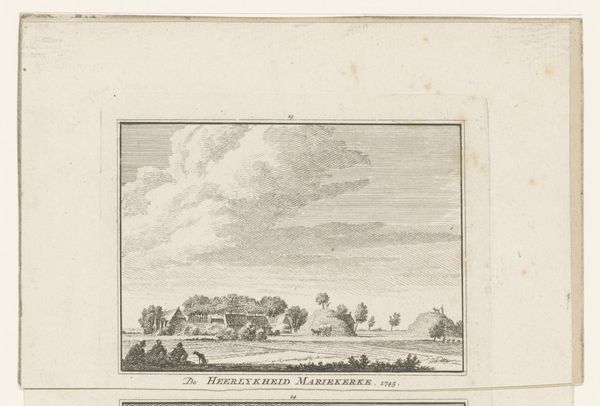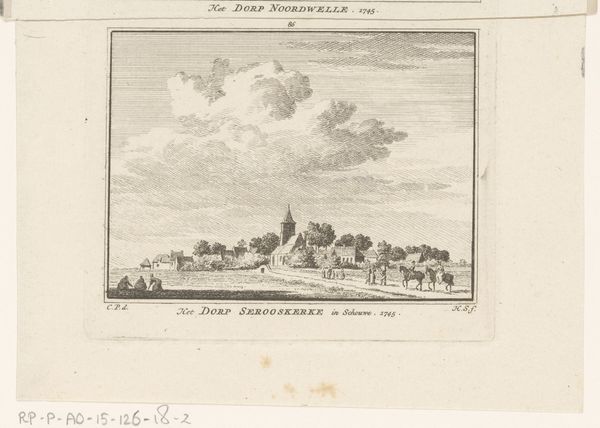
Dimensions: height 82 mm, width 109 mm
Copyright: Rijks Museum: Open Domain
Curator: This engraving, "Gezicht op het dorp Baarland, 1745," or "View of the village Baarland, 1745", by Hendrik Spilman, presents us with a serene slice of Dutch life rendered in ink on paper, a testament to the artistic trends during 1754 and 1792. Editor: It’s lovely! In such a restrained palette, I am compelled to wonder what color the sky might've been on that day, what shades of green painted those banks in that very specific Dutch golden-age light. It's dreamy, right? Curator: Indeed. Consider the delicate rendering of the clouds; notice how Spilman employs varied densities of line to evoke both form and depth within the heavens. The engraving’s success hinges on the mastery of such fundamental elements. Editor: Absolutely, and those figures wading in the water – there's a simplicity there, isn't there? Like time slows down when you're up to your ankles. Maybe they're looking for something, or nothing at all! I mean it. Think about that little tableau vivant... Curator: Spilman focuses the viewer's attention through placement and scale. By presenting those two people in this part of the work, their action anchors the rurality—a microcosm symbolizing labor. Editor: Which, I guess, contrasts to our perspective centuries later. To me, the composition invites reflections on nostalgia. Do you ever wish we could jump into these images and breathe the air of the past, the Baroque? It's a printed window onto another moment! Curator: Precisely. Spilman offers a carefully structured glimpse into the village's topography and socioeconomic composition within 18th-century rural Holland, rendered through the established conventions of Baroque landscape. Editor: And in the process, we gaze backward to Baarland and forward into our ever-changing emotional present. All these carefully cross-hatched lines, now available to our present imagination.
Comments
No comments
Be the first to comment and join the conversation on the ultimate creative platform.
